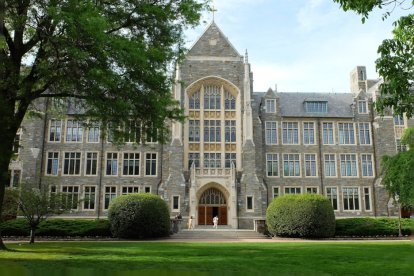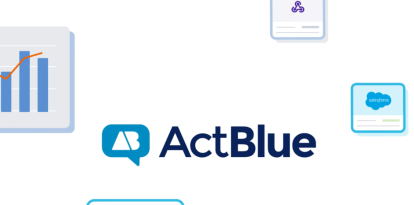College debt forgiveness alienates Hispanics and working class from Democratic Party
WSJ: "Biden is dumping on his own inflation message, dividing his party, and insulting any American who has ever worked, saved or paid a bill".

University of Georgetown / Mathieu Thouvenin (Flickr).
President Biden's plan to forgive a substantial portion of college student debt has received several criticisms. Some of them refer to its enormous cost or the negative effect it could have on inflation. Another part of the criticism, especially important at this time of year, is the effect it could have on the November elections.
High risk, low benefit
Kimberly A. Strassel, Wall Street Journal analyst, considers that "it is hard to imagine a program that involves greater political risk for such a small political gain. that “It would be hard to fashion a program that carries more political risk for less political reward”, because “Mr. Biden is dumping on his own inflation message, dividing his party, and insulting any American who has ever worked, saved or paid a bill."
Or, as Sean Collins notes in Sp!ked,
Hispanics
Democratic analyst Ruy Teixeira, in an article written in The Wall Street Journal, believes that the decline in Hispanic support for the Democratic Party is driven "by working-class, non-college-educated voters, who make up the vast majority of the Hispanic population. The benefit of the measure is not for them, but the cost is, since they pay taxes like everyone else."
Abraham Enríquez, founder of the Bienvenido movement, said in statements given to Fox News that: "The best thing that could have ever happened to the conservative movement to awaken younger Latinos has been the Biden administration, because they themselves have shown Latinos that they don't care about us."
He aded:
Solving the underlying problem
On the other hand, House candidate Cassy Garcia (R-Texas), said:
On the other hand, Daniel Galarza, president of LIBRE Initiative, considered that "The government should not be in the business of transferring the financial burden of student loans to taxpayers and do nothing to address the root issue of escalating college tuition costs."
There is an overwhelming to Joe Biden's politics among Hispanics. On the other hand, Hispanics and blacks are the two demographics moving more quickly to abandon the Democratic Party. Thus, phenomena occur, such as the fact that in Miami Dade, a county with a Democratic majority, there are more Hispanics registered as Republicans than as Democrats, according to a recent report given by Breitbart News.
Degressive measure
It's not just about the cost, but who the beneficiaries are. College students generally speaking, come from families with higher incomes and more wealth than average Americans. In fact, according to the Brookings Institution, the measure is regressive, or in other words, this means a transfer of wealth from the poorest to the richest. Thus, the study states that "almost a third of all student debt corresponds to the richest 20% of households and only 8% to the poorest 20%".
He aded:
And the same is true of the division between rural and urban America. The vast majority of university students live in cities, because that is where the universities are located.
Public spending and inflation
The measure costs at least $230 billion, according to the Committee for a Responsible Federal Budget. And that's without taking into account debt forgiveness for those who received a Pell Grant. But the cost could be much higher. The Penn Wharton-University of Pennsylvania Budget Model estimates that the final cost over a decade will be $980 billion. In other words, almost dollars.
The Obama Administration's chief economist is not at all clear: "Pouring roughly a half trillion dollars of gasoline on the inflationary fire that is already burning is plain reckless. Doing it while going well beyond one campaign promise ($10K of student loan relief) and breaking another (if all proposals are paid for) is even worse."
Widespread price increases are a major concern for Americans, and 59% of Americans believe the measure will worsen inflation.
Conflict between current and future university students
The measure benefits 13% of the population. Those who are more directly affected by a political measure are more likely to vote for that measure than other citizens who are also affected, but less so: mainly taxpayers.
Concentrate the benefits and dilute the costs, that is the recipe of politicians to win votes and not to notice the cost they impose on society. But reality does not always respond so simply to this scheme.
According to several analysts, this measure will increase the cost of university tuition. M.J. McManus, for example, notes:
And that's not the end of it, because some of the students will not benefit as much. The Tax Foundation notes that as many as 13 states may tax students for the benefits they get from having their debt forgiven. According to Jared Walczak, those 13 states would have to adopt legislative changes to prevent that from happening.
Thus, students who benefit fully from the debt forgiveness ($10,000) will have to pay $1,100 in taxes in Hawaii. Likewise, they would pay $985 in Minnesota, $700 in South Carolina and $685 in New York.
RECOMMENDATION





















